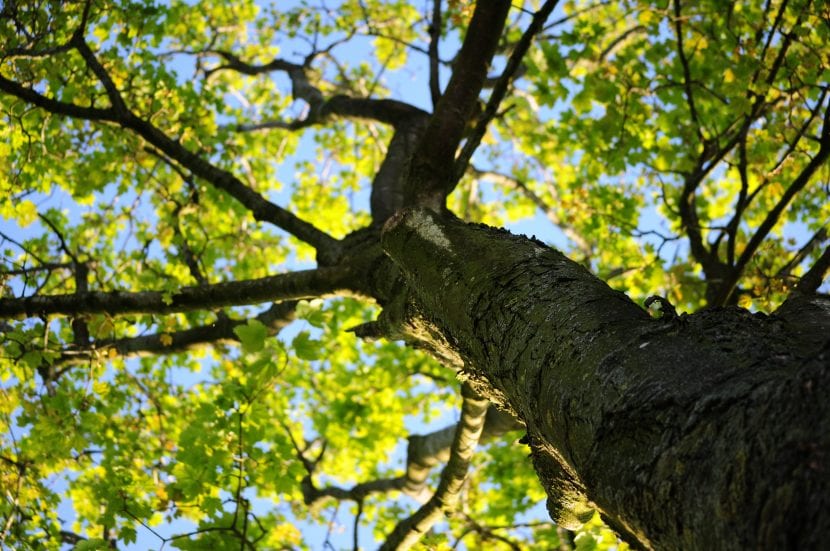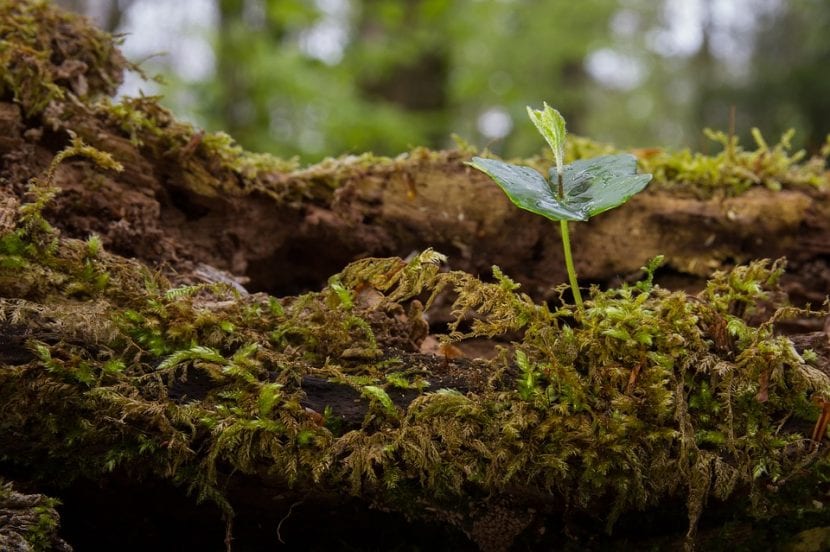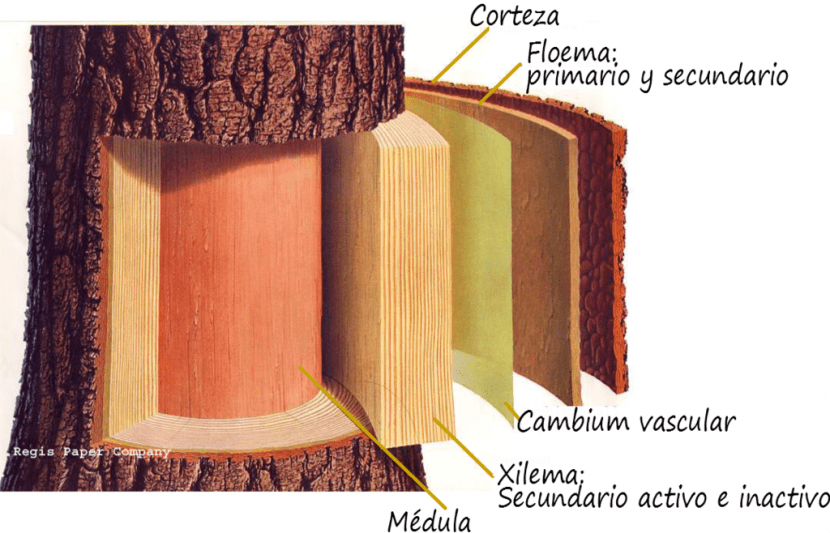
Would you like to know what are the parts of a tree trunk? Without a doubt, it is very interesting to know more about these plants, on which a large number of animals depend - including us humans. Perhaps if we all learned the parts and functions of plants, the world would be different, but this is another topic that we are not going to touch on here.
Next I am going to explain what each of the parts are, as well as how they are useful for trees.
What is a tree?

Newly germinated tree. The two cotyledons (whole, simple leaves) can be distinguished.
A tree It is a woody plant that reaches a minimum of 5 meters in height (some say 6 or 7), and that branches from certain meters above the ground. The leaves can be deciduous; that is, they fall at a certain time of the year (summer or autumn / winter), perennial (which means that they fall but very gradually throughout the year), or semi-expired, that is, they fall only partially.
There are many plants that are tree-shaped but are not.. A clear example are palm trees. Often, even in gardening books, they will tell you that these are trees too, but they really have nothing to do with them, for the "simple" reason that they are monocots, not dicots. What is the meaning of those words? East:
- Monocotyledonous: when germinating, the seedlings have a single cotyledon or primitive leaf. Other than that, they do not have cambium, which means that they cannot continuously grow in thickness. Examples: Asparagus, Pandanus, Poah, bulbous, and all palms, Among others.
- Dicot: are those that when germinating have two or more cotyledons or primitive leaflets. They have cambium, so their trunks can thicken up to… well, until their genetics tell them 🙂. Examples: all trees, shrubs, water lilies, Ceratophyllum, Amborella, etc.
What are the parts of the tree trunk?

Image - partsdel.com
Now that we know a little more about the two main groups of plants and their main characteristics, it is time to learn more about trees. The parts of its trunk are as follows:
- Cortex: it is the outer layer, and although it is hard, it is also very delicate. It is made up of an inner layer made of living cells, and the outer layer made of dead cells.
- Cambium: it is a thin layer where new cells are created, which allows the tree to grow and expand from year to year.
- Xylem: known as sapwood. It is a layer formed by a network of cells responsible for carrying water and nutrients from the root system to the branches and leaves. It is a young wood, the most, and also the softest.
- duramen: It is formed by the dead xylem, that is, by the dead cells that previously formed the xylem. This wood is the hardest, and therefore provides support and strength.
- Marrow: it is a small area of living cells that are in the center of the trunk. Through it, the most important nutrients are transported. It is protected by very hard wood.
- Medullary rays: they are rays that come out of the pith, and through which sap is transported.
I hope it has been of interest to you 🙂.